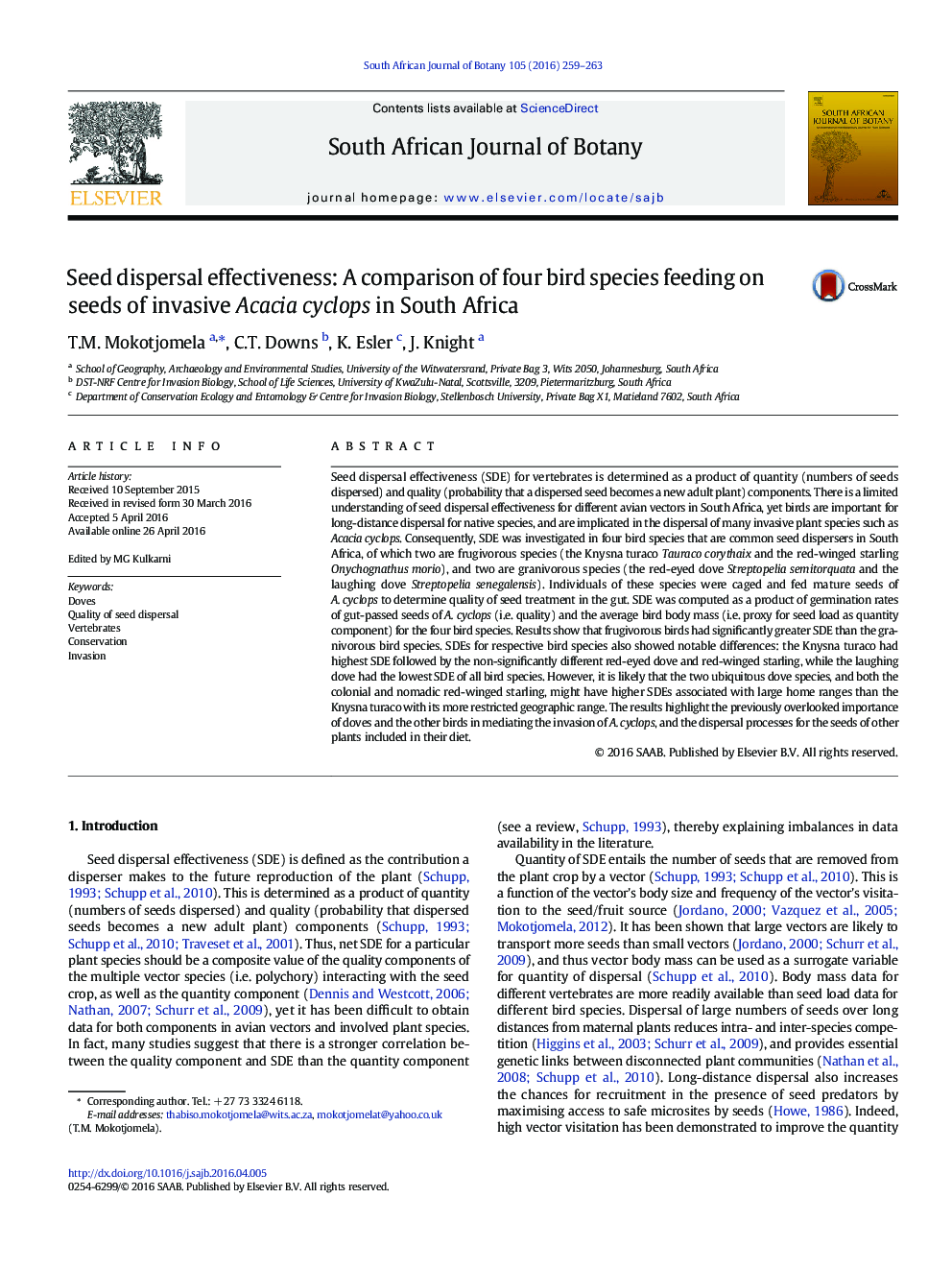| کد مقاله | کد نشریه | سال انتشار | مقاله انگلیسی | نسخه تمام متن |
|---|---|---|---|---|
| 4520123 | 1625153 | 2016 | 5 صفحه PDF | دانلود رایگان |
• Seed dispersal effectiveness (SDE)—product of quality and quantity.
• Quality investigated using Acacia cyclops seeds passed through the gut of birds.
• Bird body mass and germination rates of seeds influence SDE.
• Doves may disperse seed either scarified or not.
Seed dispersal effectiveness (SDE) for vertebrates is determined as a product of quantity (numbers of seeds dispersed) and quality (probability that a dispersed seed becomes a new adult plant) components. There is a limited understanding of seed dispersal effectiveness for different avian vectors in South Africa, yet birds are important for long-distance dispersal for native species, and are implicated in the dispersal of many invasive plant species such as Acacia cyclops. Consequently, SDE was investigated in four bird species that are common seed dispersers in South Africa, of which two are frugivorous species (the Knysna turaco Tauraco corythaix and the red-winged starling Onychognathus morio), and two are granivorous species (the red-eyed dove Streptopelia semitorquata and the laughing dove Streptopelia senegalensis). Individuals of these species were caged and fed mature seeds of A. cyclops to determine quality of seed treatment in the gut. SDE was computed as a product of germination rates of gut-passed seeds of A. cyclops (i.e. quality) and the average bird body mass (i.e. proxy for seed load as quantity component) for the four bird species. Results show that frugivorous birds had significantly greater SDE than the granivorous bird species. SDEs for respective bird species also showed notable differences: the Knysna turaco had highest SDE followed by the non-significantly different red-eyed dove and red-winged starling, while the laughing dove had the lowest SDE of all bird species. However, it is likely that the two ubiquitous dove species, and both the colonial and nomadic red-winged starling, might have higher SDEs associated with large home ranges than the Knysna turaco with its more restricted geographic range. The results highlight the previously overlooked importance of doves and the other birds in mediating the invasion of A. cyclops, and the dispersal processes for the seeds of other plants included in their diet.
Journal: South African Journal of Botany - Volume 105, July 2016, Pages 259–263
